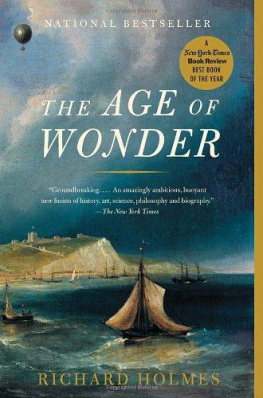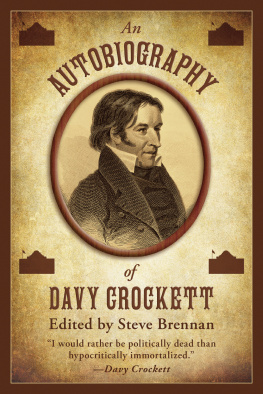Francis Davy Longe - Lowestoft in olden times
Here you can read online Francis Davy Longe - Lowestoft in olden times full text of the book (entire story) in english for free. Download pdf and epub, get meaning, cover and reviews about this ebook. year: 2017, publisher: Anboco, genre: Art. Description of the work, (preface) as well as reviews are available. Best literature library LitArk.com created for fans of good reading and offers a wide selection of genres:
Romance novel
Science fiction
Adventure
Detective
Science
History
Home and family
Prose
Art
Politics
Computer
Non-fiction
Religion
Business
Children
Humor
Choose a favorite category and find really read worthwhile books. Enjoy immersion in the world of imagination, feel the emotions of the characters or learn something new for yourself, make an fascinating discovery.

- Book:Lowestoft in olden times
- Author:
- Publisher:Anboco
- Genre:
- Year:2017
- Rating:4 / 5
- Favourites:Add to favourites
- Your mark:
- 80
- 1
- 2
- 3
- 4
- 5
Lowestoft in olden times: summary, description and annotation
We offer to read an annotation, description, summary or preface (depends on what the author of the book "Lowestoft in olden times" wrote himself). If you haven't found the necessary information about the book — write in the comments, we will try to find it.
Lowestoft in olden times — read online for free the complete book (whole text) full work
Below is the text of the book, divided by pages. System saving the place of the last page read, allows you to conveniently read the book "Lowestoft in olden times" online for free, without having to search again every time where you left off. Put a bookmark, and you can go to the page where you finished reading at any time.
Font size:
Interval:
Bookmark:

Lecture I. | ||
Page | ||
Part I. | Introductory. Geological. The Waveney. Burgh Castle. | |
Part II. | Domesday Book. The Parishes of Lothingland. Lowestoft in Domesday. Herring Rents. Condition of People in Saxon Times. Serfdom. Craftsmen. The Merchant. Etymology of Lowestoft | 1126 |
Lecture II. Lowestoft in the 14th Century . | ||
Part I. | Rise and Fall of Yarmouth. The Free Fair on Yarmouth Quay. Naval power of Yarmouth. The Black Plague. The Statute of Herrings. | 2737 |
Part II. | Rise of Lowestoft. Parliamentary War with Yarmouth. Edward Ills Charter. The Commons support Lowestoft against the Crown. Charter revoked. Charter re-granted by Richard II. Riot at Lowestoft. Richard II. visits Yarmouth. Charter revoked and re-granted. Composition between the two towns. | 3746 |
Part III. | The Lay Subsidies. Lowestoft in 1327 and 1525. Grant of Market. The Parish Church. Old Chapels. Vaulted Cellars in High Street. | 4654 |
Lecture III. Lowestoft in Elizabeths Time . | ||
Part I. | The Parish Register. The Trades of the Town. The Vicars. Mr. Annott his Schoolmaster. Resident Gentry. The Fish Trade. Piracy at Lowestoft. Cecils Fast. Lowestoft a Shopping Town. Population. Dutch Refugees. Holinshed on the Luxury of Elizabeths time. The South Flint House. | 5575 |
Part II. | Lowestoft and Yarmouth at the end of the 16th century. Gorleston Harbour. Second contest about Kirkley Road. The Star Chamber and the Judges. Opinion of Mr. Counsellor Bacon. First Boundary Pole fixed on Gunton Denes. | 7580 |
Lecture IV. Lowestoft in the Times of Charles I. and Charles II . | ||
Part I. | Dutch and French Fishermen in the British Seas. Pamphlets of Sir Walter Raleigh and Tobias Gentleman. Ship-money. Fleet sent against the Dutch Busses. The Civil War. Cromwells visit to Lowestoft. The Bell in the Town Hall. The Great Fire of 1644. Value of Houses, 1642 and 1898. | 8192 |
Part II. | Third and last Contest with Yarmouth about Kirkley Road. The Yarmouth Bailiffs and their Man of War. Lowestoft appeals to the King. Sympathetic Letter of Charles II. to Lowestoft. Decision of the House of Lords. Proceedings at Yarmouth about the measurement of the seven miles. Boundary Posts again fixed on Gunton Denes. Imprisonment and Penance of Mr. Roger Smith. Corton Pole. Effect of successful termination of the suit. Our townspeople take measures to increase their trade. Conclusion. Lowestoft Heroes of the XVII Century. | 93103 |
Arose from out the azure main.
Font size:
Interval:
Bookmark:
Similar books «Lowestoft in olden times»
Look at similar books to Lowestoft in olden times. We have selected literature similar in name and meaning in the hope of providing readers with more options to find new, interesting, not yet read works.
Discussion, reviews of the book Lowestoft in olden times and just readers' own opinions. Leave your comments, write what you think about the work, its meaning or the main characters. Specify what exactly you liked and what you didn't like, and why you think so.






